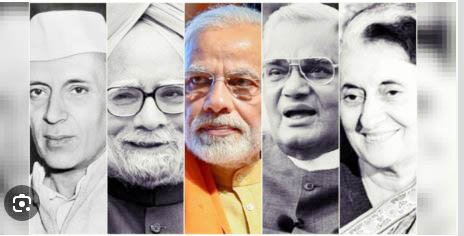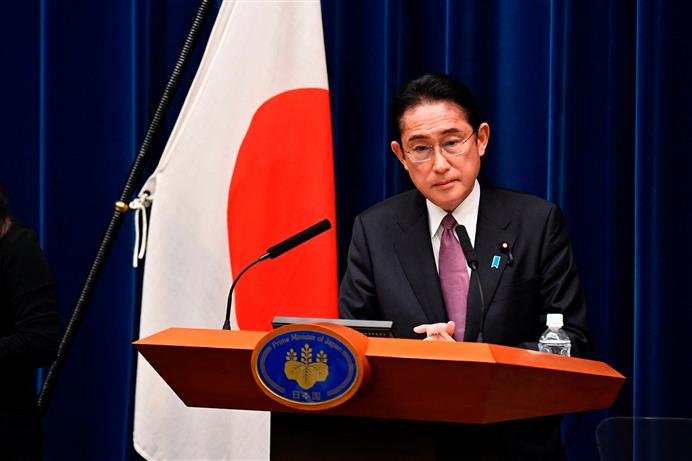By: Satyavan ‘Saurabh’
Abe’s untimely death on Friday after he was shot by an assailant during a campaign program for a parliamentary election has put curtains on the career of a leader who has redefined Japanese politics and diplomacy. In his 2013 speech, he outlined three foreign policy priorities. First, he wanted Japan to step up to become the “guardian of the global commons”. The second amendment of the country’s post-war constitution and the third peace treaty with Russia. In 2021, the Government of India honoured Abe with the country’s second-highest civilian honour, the Padma Vibhushan.
Japan is regarded as a major partner in India’s economic transformation. In recent times, the India-Japan relationship has grown into a partnership of great essence and purpose. Japan’s interest in India is growing for several reasons, including India’s large and growing market and its resources, especially human resources. Within India, Japan has been a major financial donor to India in the form of ODA (Official Development Assistance). It continues to maintain a high level of interest and support for India’s mega infrastructure projects such as the Delhi-Mumbai Freight Corridor, Delhi-Mumbai Industrial Corridor, Chennai-Bangalore Industrial Corridor, and Ahmedabad-Mumbai High-Speed Rail. projects.
The Asia-Africa Growth Corridor (AAGR) outside India was announced in 2017. Some third countries such as Bangladesh, Myanmar, and Sri Lanka, and also joint projects in Africa are being pursued jointly. The Quadrilateral Security Dialogue is a strategic dialogue between India, the United States, Japan, and Australia. The Malabar exercise has been conducted by India, Japan, and the US on an ongoing basis. 2+2 dialogues are being held at Defense and External Affairs Minister level.
In the list of countries to which India exports, Japan ranks 18th in the list of top 25 countries and ranks 12th on the list of importing countries into India. India’s exports to Japan in FY2018 were lower in value terms as compared to FY2015. India is struggling to enter the Japanese market as a result of language barriers, high quality, and service standards. Negotiations for the purchase of amphibious US-2 aircraft have been going on for years. India’s desire to go to the northeastern states, where Japan has made a significant commitment to development, has never been fulfilled. Japanese bullet train from Ahmedabad to Mumbai, later running late due to land acquisition and other issues.
Japan as a leader in the Indo-Pacific as a leader in the rules-based order in the Indo-Pacific region, Abe was among the first to popularize a rules-based order in the Indo-Pacific. He wanted Japan to take steps to become a “guardian of the global commons” in an increasingly competitive maritime domain and work closely with “like-minded democracies” such as India, Australia, and South Korea. He assumed greater security responsibilities, especially while growing Chinese influence in Asia. This stand often brought him into the crosshairs of Si China. Abe also wanted Japan to be a leader in regional trade.
Under his watch, Japan amended laws that would allow its armed forces to be stationed overseas and the military for the first time on foreign soil participated in the exercise. They significantly strengthened the US-Japan alliance, and based on that, they established a basis for regional security cooperation by S, Japan, India, and Australia [Quad]. Executed the Trans-Pacific-Partnership Trade Deal, which was seen as an economic counter to China. Abe Administration the TPP was also able to be established without the US, which helped the Asia-Pacific region somehow maintain the momentum of free trade.
Abe moved Japan-India relations away from a narrow financial aid paradigm to shared leadership in the vast Indo-Pacific region stretching from the South China Sea to Suez and Africa’s east coast. India and Japan agreed to upgrade bilateral ties to a “Special Strategic and Global Partnership” – Civil Nuclear Energy for Maritime Security, Bullet Train for Quality Infrastructure, Act East Policy for Indo-Pacific Strategy, Abe for India He was a valuable G-7 leader who focused on strategic, economic and political delivery, and did not deviate from India’s domestic development.
During Abe’s tenure, India and Japan became closer in Indo-Pacific architecture. Abe clarified his vision of a “confluence of two seas” in his 2007 speech when the Quad was formed. During Abe’s visit in 2015, India decided to introduce the Shinkansen system (bullet train). Under Abe’s leadership, India and Japan also formed the Act East Forum and are engaged in projects in the Northeast that China is eyeing. The two countries also planned joint projects in the Maldives and Sri Lanka to counter Beijing’s influence.
India and Japan were able to conclude the civil nuclear deal, which was considered impossible due to Japan’s nuclear sensitivity and India’s refusal to sign the Non-Proliferation Treaty, only because of Abe’s persistence with his parliament. While the security agreement was in place since 2008, under Abe, the two sides decided to hold a foreign and defense ministers meeting (2+2) and begin negotiations on acquisition and cross-servicing agreement. In 2019, the first Foreign and Defense Ministers meeting was held in New Delhi. An agreement for the transfer of defense equipment and technology was also signed in 2015, an unusual agreement for post-war Japan.
Since 2013, there have been four publicly known border standoffs between Indian and Chinese troops, and Abe stood by India through each of them. During the Doklam crisis and the current standoff, Japan made statements against China for changing the status quo. The Indo Pacific is a strategic location that offers many challenges and opportunities for India and all other stakeholders. India has strategically invested in several island countries like Japan as well as the Maldives. Japan is an important pillar of India’s interests in the Indo-Pacific, with appropriate diplomatic manoeuvring and economic and military assertions leveraging space as a building block for multipolar world order.
India should leverage Japan’s strengths in areas such as medical equipment and hospitals, and India and Japan should strive to work together for rules-based and inclusive world order. The Clean Energy Partnership will encourage manufacturing in India, fostering collaboration in R&D, along with building resilient and reliable supply chains in these sectors. (The author is a Research Scholar, poet, independent journalist, and columnist, All India Radio and TV panellist)







